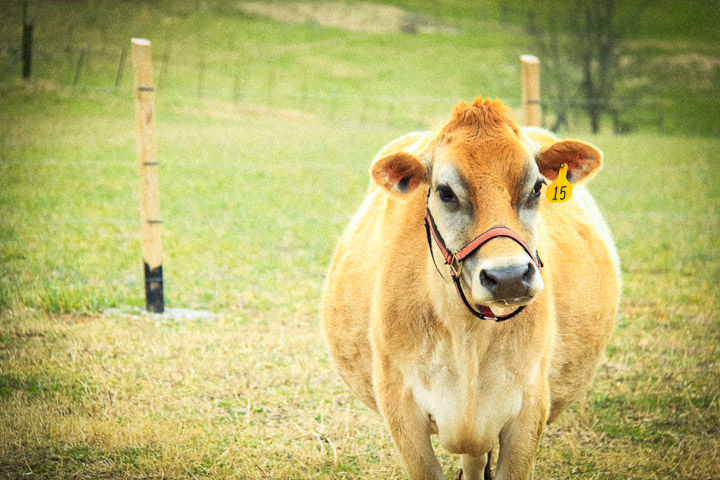The Raw Facts About Milk
The Raw Facts About Milk
For many years, raw milk has been advertised as dangerous with fears of tuberculosis, botulism and other diseases. This is just not the case. Louis Pasteur, the man who developed pasteurisation, in later years admitted the germ theory was not sound. In recent decades, all outbreaks of salmonella from contaminated milk have occurred in pasteurised milk. One outbreak in America affected 14,000 people and resulted in at least one death.
Supermarket milk is bad for you!
The modern day cow (Daisy) is a freak of nature. A century ago cows produced two or three gallons of milk per day, today they produce more than three or four times this, thats a massive 12 gallons per day (poor Daisy). Growth hormones play a huge role in this and unfortunately when cows are injected with hormones, they are at an increased risk for clinical mastitis, and the pus from the udders may end up in the milk along with traces of the hormones yummy! To top it off, cows are prone to many diseases due to their poor housing situation so they are given frequent doses of antibiotics to keep them healthy. Unfortunately some of these antibiotics can also end up in our milk supply!
Supermarket brought milk is no longer in its raw natural form. It is pasteurised and homogenised. These two processes are both very dangerous for your health as they change the natural form of the milk into a form unrecognisable by the body.
So what exactly is pasteurisation?
Pasteurisation is a heating process that destroys all the enzymes in milk. It is these enzymes that help the body absorb all the nutrients to build, develop and grow. Some people rely on drinking milk for their daily calcium intake however it is near impossible to absorb calcium or any other nutrients in pasteurised milk as the enzymes are killed. The lack of calcium in ones body may lead to bad teeth, nervous troubles, osteoporosis amongst other ailments.
The process in pasteurisation turns the sugar in milk, known as lactose, into beta-lactose. This is significantly more soluble and therefore absorbed more rapidly into the blood system. This will increase insulin in the body and overtime, can lead to diabetes and even metabolic syndrome.
After pasteurisation, chemicals may be added to suppress odour and restore taste. Synthetic vitamin D2 is also added; this is toxic to the body and has been linked to heart disease.
What is homogenisation?
Homogenisation is an intense process that forcefully breaks up the fat molecules present in butterfat thus allowing them to be attached to the milk itself. This forceful process leaves these delicate fats subject to oxidization. Oxidised fats contribute to heart disease, hypertension and hyperlipidemia. Raw milk is not homogenised. You will notice when you buy raw milk, the cream rises to the top, this will never occur in homogenised milk.
So now you know whats so bad about supermarket brought milk, lets look at the benefits of grass fed raw milk.
Why drink raw milk?
Raw milk is a living food. It contains beneficial bacteria critical for optimal health. These bacteria are responsible for stimulating and training the immune system to function correctly. By consuming raw milk, you will help optimise the level of beneficial bacteria present in your gut.
Raw milk from grass fed animals is rich in Conjugated Linoleic Acid (CLA). CLA is known to fight cancer (particularly breast, intestinal and bone cancers), hypertension and adipose obesity (strip off fat). Raw milk is also rich in natural fat soluble vitamins including vitamin A, K and E and rich in water soluble vitamins C (absent from pasteurised) and the vitamin B family. A litre of raw milk from grass-fed cows contains approx 50% more vitamin E and 7% more folate than pasteurised milk. Because most vitamins are destroyed by the heating process in pasteurisation, synthetic vitamins have to be added. The body does not recognise these synthetic vitamins and are therefore rendered useless.
Raw Milk is rich in natural food enzymes. These enzymes help your body digest and metabolise its vital nutrients including calcium. Without these natural enzymes, milk intolerances can occur due to adverse reactions within the milks natural sugars, fats and proteins. Those who have milk intolerances should find switching to raw unpasteurised milk may eliminate these symptoms.
Raw milk can be brought from farmers directly or at your local farmers market. If you are new to drinking raw milk, we suggest you may want to eat small amounts of yoghurt or kefir for a week or so to give your digestive tract a pro-biotic boost before introducing raw milk. Do yourself a favour and switch to raw nutritious milk and obtain all the benefits it has to offer.
Results Personal Training
Results Personal Training specialises in Fat Loss, using a holistic approach to diet and exercise. Results have helped thousands of individuals gain health, confidence and a body of their dreams.
For your free rapid fat loss workout visit www.resultspersonaltrainers.co.uk
Your Free Rapid Fat Loss Workout
